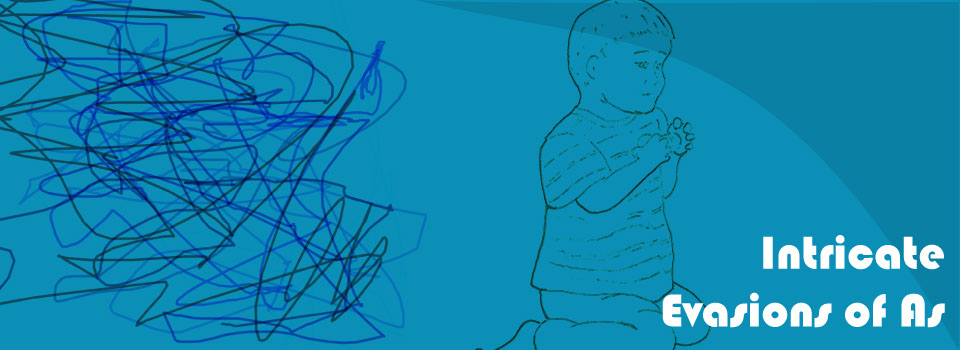
x
Contents
Home
Home
Home

Nonreflection

no telos

nonphenomenologizable

and lose one's self

see the analysis
of Ware

no true origin but the (non)origin of truth
Based on various other sections, it would be easy to assume I am arguing for more reflection in multimodal composition. This page explains why reflection doesn't solve our problems.
Rudolphe Gasché’s The Tain of the Mirror: Derrida and the Philosophy of Reflection builds and complicates a case for reflection as the central problem of Western metaphysics. He initially creates a history of reflection, from Socrates’s “know thyself” through Descartes’s skeptical reflection and into Hegel’s absolute reflection. Reflection here means more than careful consideration of an object. It progresses toward thought that takes the self as its object, then takes ever and ever closer objects for reflection (self—thought—reflection). With Heidegger, the subject-object relationship has been complicated sufficiently to merit dropping the term reflection altogether—Heidegger uses Besinnung, which Gasché is careful to say should not be translated as “reflection.” Instead it indicates the “movement by which thought become involved in what it belongs to” (117), much like Lyotard’s figural or Deleuze’s fold of the plane of immanence:
Besinnung, consequently, is the term by which Heidegger calls the non-reflexive capturing of what is turned back through a destruction of the history of ontology, not only insofar as its representations of Being are concerned, but also as concerns its major methodological concept of reflection. (117)
Heidegger’s Destruktion makes way for (but is not identical with) Derrida's and Lyotard’s deconstructions.
Here we return to the impossibility of the hors-texte with which I have already identified Derrida. Gasché makes clear that for Derrida this does not mean that all is language but that there can be no final arbiter of meaning:
The general text . . . has no extratextual signified or referent, no last reason, whether empirical or intelligible, at which its referring function could come to a final halt. It also means that the generalized text does not refer to something outside the system of referentiality that could do without being referred to, but that its referentiality is such that it extends abysmally out of sight without, however, entailing the text’s self-reflexivity. The absence of all extra-text, about which one could decide independently of the textual system of referral, implies that there is no one final meaning to the text. Again, it must be repeated that this is so not because of the general text’s semantic wealth or unfathomable depth, nor because of the finitude of its human decipherer, but for structural reasons. (Tain 282)
Note first that there is no depth to the general text. This is not to make of it a plane of immanence (as will be shown below). Nor is the text totalizing in the sense of excluding any real world. It is more closely aligned with a structural (though not structuralist) analysis of Heidegger’s referential totality.
Referral itself is made possible by the separation of self and other, of subject and object, the arche-trace. The trace is constitut(ed)ive of/by différance. Derrida notes,
And we will see why that which lets itself be designated différance is neither simply active nor simply passive, announcing or rather recalling something like the middle voice, saying an operation that is not an operation, an operation that cannot be conceived either as passion or as the action of a subject on an object, or on the basis of the categories of agent or patient, neither on the basis of nor moving toward any of these terms. For the middle voice, a certain non-transitivity, may be what philosophy, at its outset, distributed into an active and a passive voice, thereby constituting itself by means of this repression. (Margins of Philosophy 9)
According to Derrida's hypothesis, the original philosophical move was to divide the middle voice into active and passive, thereby separating subject and object. Heidegger’s reinvocation of the middle voice divorces his ontology from traditional philosophy as it demolishes the subject-object opposition.
In short, the arche-trace must be understood as the fold of an irreducible “bending-back,” as a minimal (self-)difference within (self-)identity, which secures selfhood and self-presence through the detour of oneself (as Other) to oneself. (Gasché, Tain 192)
The trace then makes possible self-reference through identification of distinct entities at the same time that it makes self-reference impossible by making identification always approximate.
The immediate takeaway is that, as a reference system, the general text cannot get outside itself, nor ever refer to itself exactly. In this sense, Gasché says that there can be no reflexivity:
The illusion of self-reflection of a text is witness only to the representational function of a text, not to its representation of something outside the text or it self-representation. It is an effect of the text’s nature as a system of referral. (Tain 291)
Referral makes reflection possible and impossible in the same movement. The general text is a “system of traces” based upon metaphor.
Metaphor makes possible the originary split of the middle voice, the beginning of philosophy. Derrida concludes, “Différance, in a certain and very strange way, (is) ‘older’ than the ontological difference or than the truth of Being” (Margins 22). Différance then reveals a certain metaphoricity in being. Gasché sees in Derrida’s notion of the metaphoricity of the general text a subtle gesture toward the transcendental:
Since, as an “originary” synthesis, metaphoricity is more originary than what I have formerly referred to as transcendentality, and since it also combines with the most exterior qualities of metaphor, with metaphor’s exteriority to the concept, I shall try to define it as a nonphenomenologizable quasi-transcendental. (Tain 295)
Let's aim at an understanding of this final word through a division of the penultimate.
Nonphenomenologizable signifies the recognition of the limits of phenomenology. Phenomenology always entails a return to Sachen selbst, the things themselves. Gasché writes, “Derrida’s inquiries are concerned with a difference that is no longer phenomenologizable, that has no ‘itself’ to itself but that, in its irreducible plurality, ceaselessly differs from itself” (88). When discussing metaphoricity, différance, or trace, there can no longer be any “itself” as distinct from something else.
With quasitranscendental Gasché signifies an alternative to Heidegger’s finite transcendentals. Finite transcendentals are the constitutive features of Dasein, while “quasitranscendentals are, on the contrary, conditions of possibility and impossibility concerning the very conceptual difference between subject and object and even between Dasein and Being” (317). The quasitranscendentals (metaphoricity, trace, différance, perhaps figure) precede Dasein.
Nonphenomenologizable quasitranscendentals occupy a position between the transcendental and the empirical and between immanence and transcendence, thereby coupling the two binaries. It is through Derrida’s move away from phenomenology that the transcendental blurs into transcendence. Transcendentals imply a transcendence through the hierarchical principle of identity. However, when identity is under erasure, immanence reasserts itself within transcendentals.
Similarly, as Deleuze articulates in What Is Philosophy?, immanence does not lie outside of thought but rather makes thought possible:
The plane of immanence is not a concept that is or can be thought but rather the image of thought, the image thought gives itself of what it means to think, to make use of thought, to find one’s bearings in thought (37)
While Derrida, Deleuze, and Lyotard each seek to subvert and combine the twin binaries of immanence/transcendence and transcendental/ empirical, they also collapse these binaries in tellingly different ways. In Discourse, Figure Lyotard makes clear his distinction from Derrida:
As we pursue the analysis we come up against a density, an opacity: the locus, I will assume, of the figural which deconstructs not only discourse but the figure, in as much as the figure is a recognizable image or a regular form. And underneath the figural: difference. Not just the trace, not just presence-absence, period, indifferently discourse or figure, but the primary process, the principle of disorder, the incitement to jouissance. Not some kind of interval separating two terms that belong to the same order, but an utter disruption of the equilibrium between order and non-order. As we sound these depths of the pseudarche we may perhaps get a handle on the truth of difference, whose presence was already felt in the tangible order, the order of the visual field, but where it is simply a metaphor. Its proper field, the environment it requires in order to try to establish itself, is the pseudarchaic. (328)
Figure is not merely a trace. The given is not a text: it has a density to it.
So far we've been reading Discourse, Figure as a complex response to Of Grammatology. Lyotard later clarifies this relationship:
When J. Derrida talks of the trace, and . . . when he talks of archi-writing, the error, I think, is that of not dissociating what is letter and what is [line]. It’s obvious that the line does not function like the letter. For the letter is made up of a set of distinctive features, and if it can bear meaning, this is because, just like speech, it offers the receiver easily recognizable elements, in a binary logic. This is not true of the line. . . . One can in no way say that the line traced by Klee’s pencil on a piece of paper is loaded with effects of meaning in the same way as the letters he writes under that line, which say simply: Salto mortale, for example. Absolutely not. (Dérive 228-29; quoted in Bennington 102)
Bennington glosses this passage with, “Derrida would of course reply that the difference between line and letter is itself a trace” (102). But I think it is worth noting just how different Lyotard’s difference is from Derrida’s. Lyotard bases his conception of difference on Deleuze's. When Lyotard distinguishes difference from opposition, we can see just how far he is from Derrida’s quasitranscendentals, each of which is based in an always already collapsing opposition. Derrida’s deconstruction shows the unsustainability of opposition. Lyotard’s starts with the assumption of a nonoppositional difference. In this sense, they are not so much in disagreement as emphasizing different aspects of similar processes.
The line is not the letter. The image Lyotard constructs for dealing with their relationship is the Mœbius strip interlaced with a band. This construction may have originated as a Mœbius strip that was cut (like the cut in the middle voice), but this must always remain pseudarchaic. We have no access to the figure as origin, whether in a historical sense, or in a more personal, psychoanalytic sense. Instead, we are surrounded by a given that is constituted by both discourse and figure, forever intertwined.
Click play to see how (no audio).

there is no outside in which to reflect

no hors-texte

the calls are coming from inside the (prison) house (of language)

not just dispersed but disolved agency

Le Pli

“structural reasons”

quasitranscendental

it makes concepts possible

tain

quasitranscendentals

The given is not a text, it possesses an inherent thickness, or rather, a difference, which is not to be read, but rather seen. (Discourse, Figure 3)

Video showing the creation of a Mœbius strip out of a paper.

